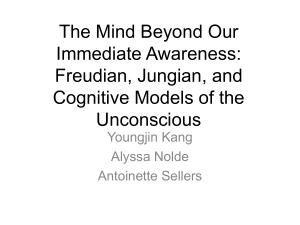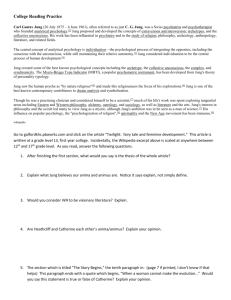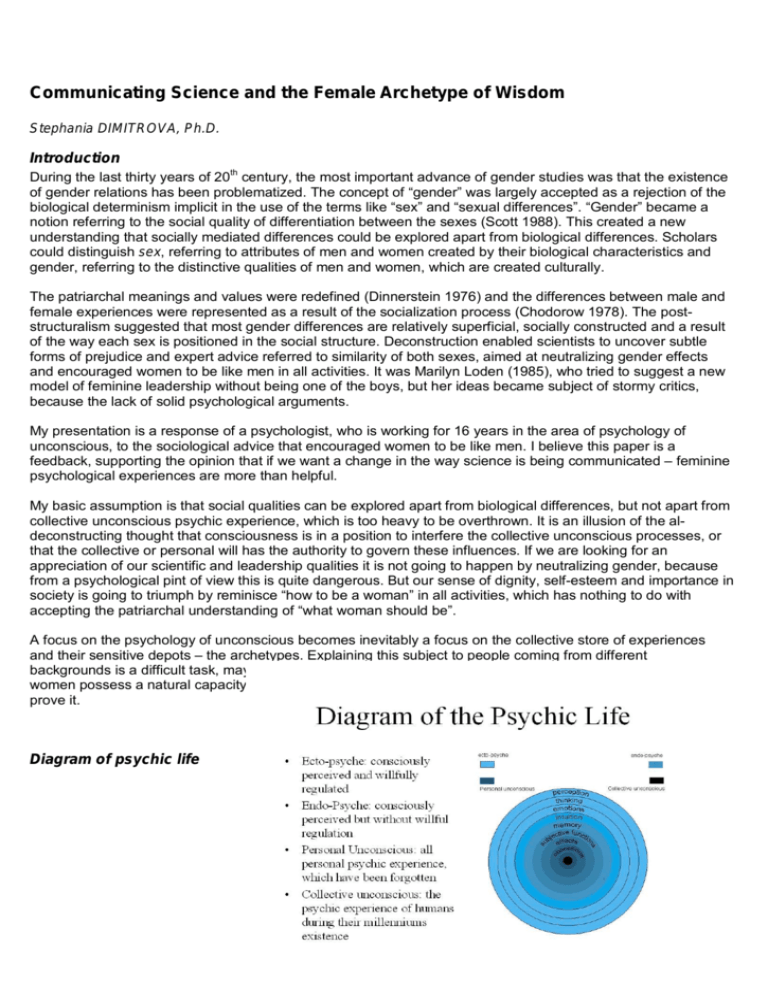
Communicating Science and the Female Archetype of Wisdom
Stephania DIMITROVA, Ph.D.
Introduction
During the last thirty years of 20th century, the most important advance of gender studies was that the existence
of gender relations has been problematized. The concept of “gender” was largely accepted as a rejection of the
biological determinism implicit in the use of the terms like “sex” and “sexual differences”. “Gender” became a
notion referring to the social quality of differentiation between the sexes (Scott 1988). This created a new
understanding that socially mediated differences could be explored apart from biological differences. Scholars
could distinguish sex, referring to attributes of men and women created by their biological characteristics and
gender, referring to the distinctive qualities of men and women, which are created culturally.
The patriarchal meanings and values were redefined (Dinnerstein 1976) and the differences between male and
female experiences were represented as a result of the socialization process (Chodorow 1978). The poststructuralism suggested that most gender differences are relatively superficial, socially constructed and a result
of the way each sex is positioned in the social structure. Deconstruction enabled scientists to uncover subtle
forms of prejudice and expert advice referred to similarity of both sexes, aimed at neutralizing gender effects
and encouraged women to be like men in all activities. It was Marilyn Loden (1985), who tried to suggest a new
model of feminine leadership without being one of the boys, but her ideas became subject of stormy critics,
because the lack of solid psychological arguments.
My presentation is a response of a psychologist, who is working for 16 years in the area of psychology of
unconscious, to the sociological advice that encouraged women to be like men. I believe this paper is a
feedback, supporting the opinion that if we want a change in the way science is being communicated – feminine
psychological experiences are more than helpful.
My basic assumption is that social qualities can be explored apart from biological differences, but not apart from
collective unconscious psychic experience, which is too heavy to be overthrown. It is an illusion of the aldeconstructing thought that consciousness is in a position to interfere the collective unconscious processes, or
that the collective or personal will has the authority to govern these influences. If we are looking for an
appreciation of our scientific and leadership qualities it is not going to happen by neutralizing gender, because
from a psychological pint of view this is quite dangerous. But our sense of dignity, self-esteem and importance in
society is going to triumph by reminisce “how to be a woman” in all activities, which has nothing to do with
accepting the patriarchal understanding of “what woman should be”.
A focus on the psychology of unconscious becomes inevitably a focus on the collective store of experiences
and their sensitive depots – the archetypes. Explaining this subject to people coming from different
backgrounds is a difficult task, maybe as difficult as explaining the human genome, but my assertion is that
women possess a natural capacity to explain difficult subject in simple arguments and I hope I am going to
prove it.
Diagram of psychic life
This diagram (Jung 1967) presents the individual system of orientation about how to operate with the realities of
the external and internal world. The external light circles stand for the processes that may be consciously
perceived and willfully regulated (ecto-spyche). The internal gradually darkening circles stand for the process of
endo-psyche, which are less possible to be willfully controlled (memory, subjective functions, affects and
obsessions). Memory, for instance, is partly influenced by willpower, but cannot readily recover all details of
past perceptions, since many of the peripheral objects of perception have sunk into the twilight of memory.
Gradually, subject to less willful control are memory, subjective components, affects, and obsessions. Affects
are seldom subject to willful control and obsessions are hard to be mastered. Primitive peoples sincerely
described that affected people are "fallen under the power of demons”.
At the beginning of 20th century scientists dared to ask: “What are the psychic daemons, which are difficult to be
grasped by consciousness and that affect and may destroy our life?”
Psychology of the unconscious
It was Sigmund Freud who, immersed in the Jewish mystical tradition, set the stage with his ideas about
personal unconscious. But it was Carl Gustav Jung, who took the idea to the logical conclusion that the mind of
no person is “an island”.
Freud introduced the personal unconscious, which consists of personal psychic experiences; forgotten or even
not noticed, but sank into the depth of the individual psyche they influence his or hers perceptions and reactions
without neither personal willful control nor even personal awareness. The personal unconscious is a personal
acquisition and a consequence of socialization process. That’s why the gender studies of Freudian
psychologists resulted in the conclusion that the basic differences between the sexes are a product of social
conditions, either set early in life and lodged in the different psyche of the sexes by the process, which create
identity or constructed as different through the social relations and socialization process. (Gilligan 1982).
At the core of Jung’s system is the idea that “the psyche” is a total self divisible into two key parts, the
conscious and the unconscious. The hidden side, a personal unconscious, borders on a greater unconscious
that all people share. Jung called it collective unconscious.
My theisis, – he wrote, - is as follows: In addition to our immediate consciousness, which is of a thoroughly personal nature
and which we believe to be the only empirical psyche (even if we truck on the personal unconscious as an appendix), there
exists a second psychic system of a collective, universal, and impersonal nature which is identical in all individuals. This
collective unconscious is not developed individually but is inherited. It consists of pre-existing forms, the archetypes, which
can only become conscious secondarily and which give definite form to certain psychic contents (Jung 1977: 275).
The collective unconscious is the storehouse of the millenniums’ human psychological experiences, which
influence the entire psychic life of persons and societies. “The collective unconscious”, he said, “can be
distinguished by the personal unconscious by the fact that it does not, like the latter, owe its existence to
personal experiences and consequently is not a personal acquisition” (Jung 1978: 42).
This is the main reason why the gender studies of Jungian psychologists differ from Freudians. A typical
Jungian gender study is emphasizing on resolution, or reconciliation, of the dualities within the individual
/animus – ”the man inside” of women’s psyche or anima – “the woman inside” man’s psyche/. Or it
acknowledges the basic psychic experiences of the both sexes as different, referring to the collective
unconscious as a consequence of countless condensed psychic processes of the same type, stored in human
unconscious in the form of encrypted imprints.
The brain, writes Jung, comes into this world not as tabula rasa, but with a definite structure, it functions in regard to the present
but has a history of its own. It has evolved for many years and contains the history whose product it is. Yet just as the body, the
brain will naturally bear the traces of this history. Human mind contains the psychological heritage of the ancestors the same way
as human body carries the traces of evolutionary process of living beings.
The “deposits of the constantly repeated experiences of humanity”(Jung 1976: 237) are stored in human
unconscious as sensitive depots of psychic energy. They are no qualities, no images – they are tendencies,
river-beds of the psychic energy. Jung calls them "archetypes". The constellation of archetypes constitutes the
psychic genome of humankind.
One of the Jung’s major contributions was the suggestion that a man has within his unconscious an archetype
the female personality “anima”, and that the woman has within her unconscious a male personality “animus”.
(Jung 1964:243-244) (Jung 1953:297). These are opposites which one strives to resolve. For a man to know
the anima, and for a woman to know animus his or hers own contrasexual component as Jung described it, is to
achieve what traditional literature has called enlightenment”, or what Jung called “individuation”. Jung said, “I
use the term ‘individuation’ to denote the process by which a person becomes a psychological ‘in-dividual’, that
is, a separate, indivisible unity or whole”(Jung1977:275).
Anima appears in human conscious mind as the Eternal Woman, the Eternal Queen. She can be Hera, Diana,
Hecate, she can be a virgin, a mother, hag, or whore.
The archetype of Animus is the “antagonist” of every woman and covers a broad spectrum of principles, “a
deposit … of all woman’s ancestral experiences of man”. (Jung 1953:296-331). This male aspect of the female
is argumentative, self-asserting, and tending to criticism for its own sake. It appears in the conscious mind as
the Father, the son, the brother, the king, the court of father-like judges, the hero etc.. In her daily life a woman
draws upon the personality of animus in the same way that a man draws upon the personality of anima, and it is
possible for the contrasexual component to overshadow or to “posses”, as Jung calls it.
Basically the encounter of animus and anima are not a philosophical exercise. It is intensely practical, involving
the deepest feelings and the most sensitive interpersonal relationships. One of the problems with archetypes is
that their behavior is so polar and changeable, if not impossible to predict under given circumstances.
Jung warns about the animus’s and anima’s dark and moody side, especially if one becomes possessed by the
figure. What happens in this case is that a man overwhelmed by anima displays feminine traits, whereas a
woman relating to animus shows more masculine characteristics. (Such a psychic condition is not to be
equated with homosexuality, where the psychosexual structure of the individual is overridden.)
In the case of possession both figures [animus and anima] lose their charm and their values. … [Man with a projected
anima] is fickle, capricious, moody, uncontrolled and emotional … [Woman possessed by animus] is obstinate, harping on
principles, laying down the law, dogmatic, world-reforming, theoretic …argumentative and domineering.
That’s why I think that the rational neutralization of the gender effects is quite dangerous for the psyche, for the
contrasexual component may gain full mastery on the psychic life. Because in the struggle with androcentrism
we may loose the control over animus the man in the depths of our psyche and thus to become losers. We may
miss to proclaim the feminine alternative to the traditional masculine style as a better solution to the
contemporary world’s problems including communicating science. In this regard let me say that I have no doubt
that it seems better to acknowledge the hidden psychic experience of humankind in relation to woman’s
experience of wisdom and learn from it, than to renounce the woman’s qualities in favor of gender equality.
The archetypes (Jung 1964) are invisible energy
centers in the collective unconscious that channel
instinctual energies. They serve as “river-beds along
which the current of psychic life has always flowed”
(Gwain 1994:96). This hidden psychic information of
the archetypes never crosses the threshold of
consciousness in its pure form, but in order to be
grasped by the conscious mind it takes the form of
cultural images called archetypal images or primordial
images. Archetypal images are all the cultural symbols
/ not only mere signs and pictograms, but also
mythological personalities and folk tales’ heroes/,
whose meaning may be understood only by means of
cross-cultural parallels.
Negative disintegrative tendencies are expressed
in demonic, fearful, dark images, superstitions,
and conditionings, deities of death and
underworld, awful deities, figures immersed in
blood or darkness, wild bests, poisons etc.
Positive, integrative tendencies are expressed in
images of the wholeness: God Almighty, Mother
Goddess, Jesus, Allah, Brahma, Atman, Yahve,
Sun, holy numbers 1, 4, 7, 108 etc.
(Dimitrova 2000).
The unconscious can be a Pandora’s Box of the lowest human tendencies, and a treasury of the most precious
and worthy human dispositions. I am going to keep your attention on the positive side of the collective
unconscious and to reveal the psychological experience of wisdom encoded in the archetypal images of
goddesses.
Unless we identify the surfacing historical and cross-cultural parallels, we cannot integrate those contents into
our consciousness, so they remain projected only. In search of the hidden meaning of the archetype of wisdom,
which reveals the human experience of accumulating and communicating knowledge, a brief cross-cultural
parallel of the archetypal images of wisdom is going to be made.
Review of the Archetypal Images of Wisdom
Modern feminist scholarship and research has brought to the front a vast amount of material concerning ancient
goddesses of Wisdom worshipped before the advent of monotheism. Shrouded in mystery, revealed in wonder,
the Goddess has been adored for millennia. Sculptural evidence discovered in prehistoric caves of 30 000
years reveals her worship to be more ancient that the humankind has memory. Volumes could be filled
discussing the presence of the Divine Mother in all cultures from every corner of the world, called by many
names.
The Mother Goddess
The Neolithic settlement of Chatal Huyuk (c.7000 BC)
in Anatolia provides archaeological evidence that the
worship of the Mother Goddess experienced a long
continuity. Between the 5th and 3rd millennia BC, the
worship of Goddess became established in the Fertile
Crescent in the Indus Valley, and around the Aegean
Sea.
Creator, Nurturer and the Protector - she was the very
center of the primitive universe. (Òî êàðåâ 1980:178179).
Tara
Tara in Sanskrit language means “savior” or “star” (ÒÍîÍêÍàÍðå
Í ÍâÍ1980: 494). We hear the echoes of her name in
Latin – Terra. The Druids called her Tara. An ancient saga of Finland speaks of Tar – “the woman of wisdom”.
A tribe in South America calls their goddess of wisdom Tarahumara. The Cheyenne people speak of “star
woman” IshTar, who fell from heavens and gave crafts to humans.
To the Tibetans Buddha – the Enlightened
One is even higher of the gods, and the
mother of all Buddhas the mother of all
enlightened souls is called Tara. (Campbell
1990).
The Near East goddess of wisdom
Ishtar/Innana or Astarte wielded enormous
influence in the ancient world. In all these
beliefs and religions Tara is considered the
channel of wisdom. (Ê/à/ì/ á/ú/ë/2005)
(ÒÇ
îÇêÇ
àÇ
ðå
ÇÇ
âÇ1980: 510-511).
Mesopotamia
Other Wisdom goddesses of ancient
Mesopotamia (which includes Babylonia)
are Nisaba (sometimes written Nidaba) –
goddess of the reeds. From the reeds,
people made pipes and flutes to create
music, pens to write poetry, and work out
mathematical and astronomical problems,
to draw plans for buildings, and create
formulae for medicines. Thus she became
a Wisdom goddess and an example of how
a Nature goddess can also be closely
linked with the arts and sciences. (ÒQ
îQêQ
àQ
ðå
QQ
âQ
1980: 223-224).
Gula the Great Physician. She is known
for her temples, which are laid out and
functioned as hospitals.
The Babylonian Epic of Gilgamesh tells of
a hero's journey to discover the meaning of
life and to try and obtain immortality.
(Sandars 1960). He finds the Paradise
Garden where dwells the Goddess of Life
and Wisdom, Siduri-Sabatu. She is seated
"on the throne of the sea" and she is called
"Keeper of the Fruit of Life".
Hindu goddess Saraswati
Saraswati is the Hindu goddess identified
with “vac”, the speech. (Danielou
1991:259-261) She enjoys an autonomous
position as the patroness of art, music, and
letters. She is given legendary credit for
having invented the Sanskrit language and
the Devanagari script in which it is written.
She is usually represented in painting and
sculpture as graceful, fair, and dressed in
white garments, riding on a swan, holding
a lute and a manuscript or book.
Sarasvati is still annually worshiped in
India and Tibet with great enthusiasm by
students and teachers alike.
Goddesses of Wisdom in Antiquity
In the various pantheons in Ancient Egypt, Greece and Rome dwelt the goddesses of creation sometimes also
called Mother Goddesses. (Òî êàðåâ 1980) (Êåì áúë 2003)
Egyptian Isis
Egiptian Ma'at
Crete Serpent Goddess
Greek Athena
Artemis
Demeter,
the Great Mother of the Gods Kubaba
(Kybele),
whose worship extended from Asia Minor
to Rome
We see in the hymns descriptions and praise of these female divinities that match those of later Sophia –
wisdom herself (Campbell 2001). Their chief characteristics, apart from the gift of life, and sometimes of
immortality, are the identification with Nature. It is not something inert, or just "there", but a powerful force which
interacts with humans, which helps humans, inspires and instructs them.
By proper application of this knowledge and an appreciation of the sacrality of Nature, human beings are helped
to survive and renew themselves physically and spiritually. The practical arts that enhance life - agriculture,
medicine, domestication of animals, handicrafts, architecture, building, and astronomy, among many others are personified in wisdom, who is also source of the fine and spiritual arts that are more usually associated with
the goddesses.
Sophia – the spirit of wisdom
Sophia was believed the God’s female soul
and the source of his creative power.
(Matthews 1991) She is called “the all”,
“the queen” and “lady wisdom”. Early
Christians believed that Christ and God
merged with Sophia, the Mother of all. She
has also been called “the spirit of light”.
Her greatest shrine (considered one of the
wonders of the world), erected in
Constantinople during the 6th century was
the church of Holy Sophia (Hagia Sophia in
Greek) meaning Holy Wisdom.
Sophia is all knowing, all loving, all
feminine, and above all she has the
authority of the World Teacher.
Her symbols are: the rose, representing the earthly foundation of reality; world disc – representing her supreme
rule above the universe, and her authority to teach the philosophers and to inspire the artists; chalice –
representing the “water of life”, which she bestows upon those who worship her. The same chalice we discover
later as “the cup of the Last Supper” or “the mystical Holy Grail”.
Gradually, wisdom, which starts as a cosmic law, moves to becoming a repository of all information about the
created world. Emerges a picture of wisdom as artificer of the world, responsible and knowledgeable about its
workings. She teaches that humans must look to nature for understanding and must praise and treat it with
respect.
Lady Wisdom in Hebrew Tradition
It might appear that the goddesses of the Bible and its background have been totally lost to the consciousness
of Jews. No mention of such deities, no appreciation of their influence is part of the normative traditions of their
religion. Yet She exists.
She is the Shekinah, in the everyday tradition of Judaism. She is the dwelling place of God and she shines in
glory.
In the strong mystical – and for a very long
time, secret tradition within Judaism,
named the Kabbalah, the Shekinah
assumes her divine female form. She is
the central presence in the Tree of Life;
she is a partner to God, and the channel of
His glory. She was understood to be a
personified female, who is believed to be
an intermediary between God and the
world. (Patai 1990)
In the so-called Wisdom literature of
Hebrew Bible we find also that the Biblical
Lady Wisdom is not just an idea. She is
rather a spiritual being that exists
independently, next to God. She is eternal,
teacher of humankind, and particularly is
concerned with the creation, understanding
and sustenance of the world. (Wisdom
Literature is generally held to include the
Books of Proverbs, Job, Ecclesiastes, and
a number of Psalms.)
Everything to do with her is mysterious and paradoxical. In the Bible she is always female. ... She is the divine female
companion of God, eternal with Him before creation, and is herself involved in the cosmos as creator, nurturer, teacher and
artificer. She acts as intermediary between God and humans and is willing to share herself with them and with the world.
… Human beings must follow her rules if they are to succeed in this life and also possibly partake in an afterlife with God. It
was she who helped God create the universe and she knows all its secrets. (Pirani 1991:46)
Lady Wisdom in Christianity
We have seen that wisdom, acknowledged and worshipped as a female divinity was part of the background of
people in the world into which Jesus was born. Obscured in Judaism and translated into texts, becoming the
Holy Torah, she also moved underground into the Shekinah. (Wilken 1975)
The appreciation of Wisdom goddesses was powerful, but they became lost, and the memory about the female
alternative to gain and teach knowledge was lost. What a humiliating effect it has upon us all, on our selfesteem and what awful effect it has on humanity's relationship with the planet that nourishes. Attention to the
sacrality of nature and a view of her as universal guide and source of wisdom were lost with the rise of
patriarchal monotheistic religions (Arthur 1984). This led to the view that man must control earth, whose nature
was "inferior". Both nature and woman must serve and act as a resource for man. Misogyny on a personal and
societal basis, and total exploitation of nature on a planetary scale leading to possible global disaster have been
the presumably unintended results.
Today the Western ecology movement is trying to draw attention to this global situation, but is hampered by the
general greed of its own society. It has fallen to the ecofeminists to remind us that women are traditionally the
world's guardians of the ecosystem. The national and international forums of Foundation Madara are an
example how women-scientists can be communicators of ecological science and how their strong and sincere
voices echo in many young people’s hearts.
With the advent of official Christianity, the notion of “wisdom” not only changed gender but also her character as
artificer of nature who can teach her secrets to humanity.
But we have to mention here that the
image of Lady Wisdom has never been
totally forgotten. In the Gnostic Gospel of
Mary we read that Christ highly respected
women: He assigned to Mary Magdalini a
leading role among the apostles, and his
last words from the cross were “respect the
Mother”.
The Mother Goddess as the chalice of
wisdom gloriously returned in 12th century
through St Bernard’s worship of Mother
Mary /calling her “Notre Dame”/. It quickly
spread all over Europe.
The Mother regained her place as World
Teacher and Communicator of God in the
image of Maria Sophia.
St Sophia and Her daughters Faith, Hope
and Love, were symbols of the pillars of
medieval wisdom. Even if not officially,
Christianity affirmed that the feminine way
of enlightenment (Sophia) is worthy of
esteem.
Unconsciously the patriarchal world began
to assume that the feminine experience to
overcome challenges and to fight the
ignorance through patience, compassion
and intelligence was as valuable as the
masculine.
The feminine strategy to defeat the
destructive force, which we find in the
mythology of woman-hero is quite different
from the masculine. Feminine taming
power is sometimes stronger and much
appropriate than the combative effort of
man.
To quote from Marija Gimbutas in her book
The Language of the Goddess:
The Goddess gradually retreated into the
depths of forests or onto mountaintops, where
she remains to this day in beliefs and fairy
stories. Human alienation from the vital roots of
earthly life ensued, the results of which are
clear in our contemporary society. But the
cycles never stop turning, and now we find the
Goddess reemerging from the forests and
mountains, bringing us hope for the future,
returning us to our most ancient human roots.
The Archetype of Wisdom
The archetype of wisdom is an energy center that channels the instinctual energies for heart-to-heart teaching.
The attentive, tender, sensitive, actively receptive, concerned heart purified of all hardness, indifference,
prejudice, and hatred. It is a result of the psychic experiences of countless women, knowing the secrets of the
Earth. That’s why I believe we do not need to renounce this experience, but to unfold it. It is our great ancestral
heritage and we must not loose it. Because if we abdicate from our feminine nature and we prefer to neutralize
the gender effects – this psychological experience will be lost forever.
Modern society’s prosperity and well being is based on continuous scientific and technological progress. As
Europe continues its quest to construct the world’s most competitive knowledge-based economy, the demand
for top research talent is set to grow massively. Making science more appealing to the young requires a serious
rethinking of the way science is conveyed.
80 % of children refer science as boring, many girls don’t want to choose science or even if they choose it and
finish university ¾ of them go to do something else. We need to encourage them and to show them the human
and why not the feminine face of science.
Since science today needs a deep sense of wholeness and appreciation of the personal abilities – a
nontraditional style and behavior are in demand. Thoughts and ideas only of the mind became cold and
inflationary – it led to a kind of egotism, while ideas that came only from the heart led to sentimentality. The true
way was to unite the mind and the heart. Not by bringing the heart into the mind but by a descent of the mind
into the heart. Through the heart-through knowing Sophia can once again work in us in her caring, imaginative,
creative way. Through the heart-through speech of Sophia we can once again prove to the world that women
are the best mediators, artificers and communicators of science.
Speaking the language of the archetypes: in some inner part of themselves women know that the Mother Earth
has given them the knowledge and has authorized them to teach this knowledge. And it is time for us to fulfill
this deepest need of our natures for the sake of the next generations. That is why Sancta Sophia is the feminine
divine, Holy Wisdom.
The function of a symbol is to cause a movement of energy. When one experience contact with a symbol, the
result may be transformation. That’s why I would suggest the symbol of Sophia, to become an emblem of our
feminine alternative to accumulate and teach the knowledge of the Mother Earth.
© Stefania Dimitrova. All rights reserved.
Bibliography
Arthur, Rose (1984): The Wisdom Goddess: feminine motifs in eight Nag Hammadi Documents. Lanham, MD:
University Press of America
Campbell, Joseph (1990): The Mythic Image. Princeton: Princeton University Press.
Chodorow, Nancy (1978): The Reproduction of Mothering. Berkeley: University of California Press.
Danielou, Alain (1991): The Myths and Gods of India. New York: Bollingen Foundation.
Dimitrova, Stefania (2000): The New Image of the Self in a Multicultural Imagination: - In Search of the Self at
the turn of XXI Century. Sofia: Alpha-Omega Press pp.143-153.
Dinnerstein, Dorothy (1976): The Mermaid and the Minotaur: Sexual Arrangements and Human Malaise. New
York: Harper & Row.
Campbell, Joseph (2001): The Masks of God. Occidental Mythology. London: Souvenir Press.
Gilligan, Carol (1982): In a Different Voice, Psychological Theory and Women’s development. Cambridge:
Harvard University Press.
Gimbutas, Marija (1982): Goddess and Gods of Old Europe. 6500 – 3500 BC, Myths and Cult Images. LA:
University of California Press
Gwain, Rose (1994): A Jungian guide to Archetypes and Personality. Vermont: Destiny books, p96.
Jung, Carl (1953): Two Essays on Analytical Psychology. New York: p.297
Jung, Carl (1964): Civilization in Transition. Princeton: Princeton University Press. p. 243-244
Jung, Carl (1964): Man and His Symbols. New York: Doubleday &Company. pp.160-196.
Jung, Carl (1967): Collected works. Princeton: Princeton University Press.
Jung, Carl (1977): The Archetypes and the Collective Unconscious. Princeton: Princeton University press.
p.275
Jung, Carl (1978): Aion. Princeton: Princeton University press. p.42
Loden, Marilyn (1985): Feminine Leadership or How to Succeed in Business without Being One of the Boys.
New York: Times Books.
Matthews, Caitlin (1991): Sophia, Goddess of Wisdom: the Divine Feminine from Black Goddess to World Soul.
London: Mandala.
Pagels, Elaine (1979): The Gnostic Gospels. Vintage.
Patai, Raphael (1990): The Hebrew Goddess. Wayne State University Press.
Pirani, Alix (ed) (1993): The Absent Mother: Restoring the Goddess to Judaism and Christianity. San Francisco:
Harper p. 46
Sandars, Nancy (translator) (1972). The Epic of Gilgamesh. London. Penguin Books
Scott, Joan (1988): Gender and the Politics of History. Columbia: Columbia University Press.
Wilken, Robert (ed). (1975): Aspects of Wisdom in Judaism and Early Christianity. University of Notre Dame
Press.
Êrårìrárúrër, Äræîrór
r çår rôr (2005): Çràrïràräríràrìrèròîrër
r îrãr
èrÿr. Ñrîrôrèrÿr: Ðrèrâà
r r.
Ò§
î§ê§
à§
ðå
§§
â,§À§
ë§
å§
êñ§
§à§
í§ä§
ð§(ð§
åä
§§
à§
êò§
§î§ð§
) (1980): ̧è§
ô§û§í§à§
ð§
î§ä§
î§â§ì§è§
ð§
à§
, ò§
î§ì§ 1 è§ò§
î§ì§ 2. ̧î§ñ§
êâ§
§à§
: ѧ
î§â§
å§
òñ§ê
§à§
§ÿ§
åÛ
íÛöÛ
èÛ
êëÛ
ÛîÛïÛåÛ
äÛ
èÿÛÛ
.

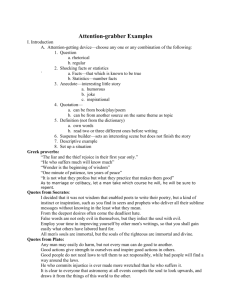
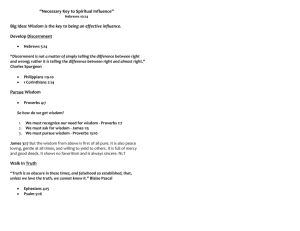
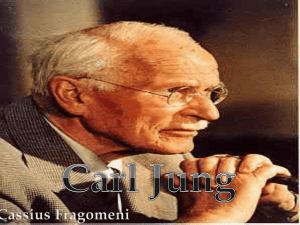
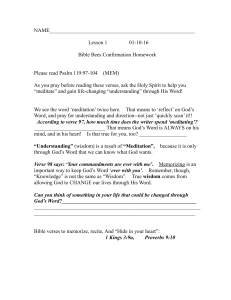
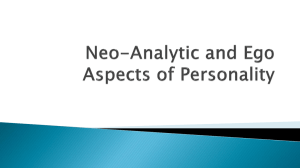

![Procopios: on the Great Church, [Hagia Sophia]](http://s3.studylib.net/store/data/007652379_2-ff334a974e7276b16ede35ddfd8a680d-300x300.png)
